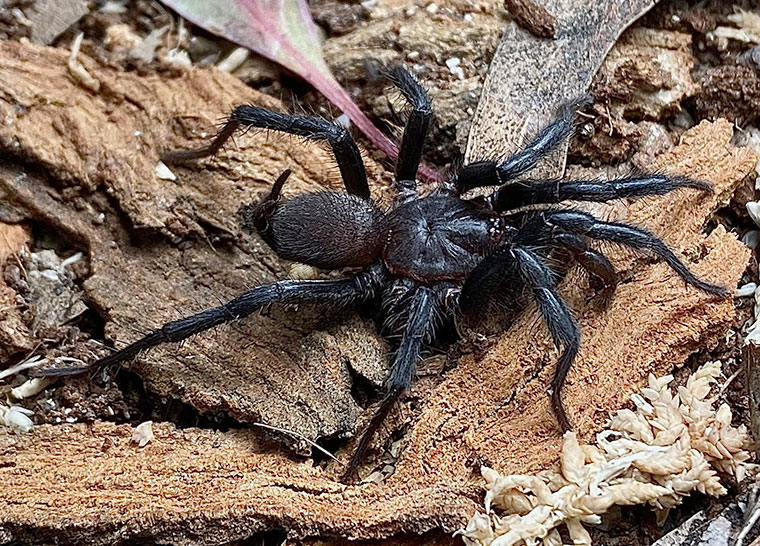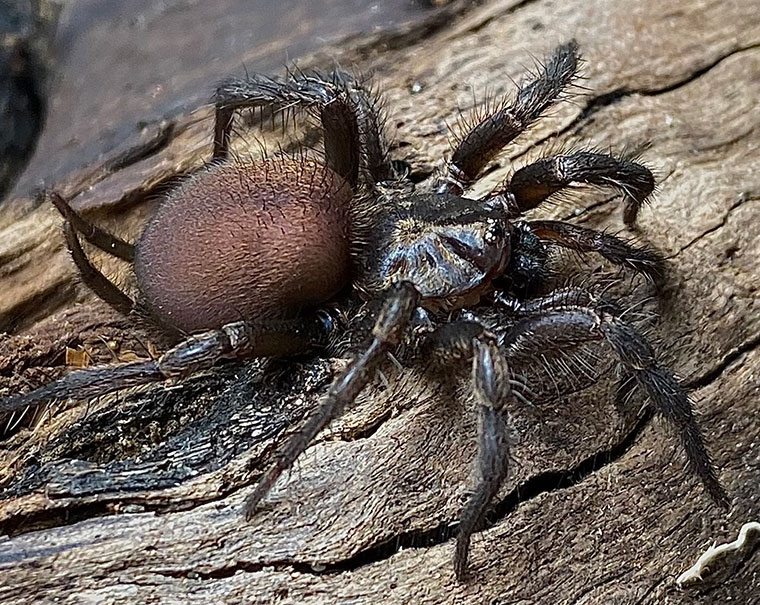In 2020 Euagridae was raised to family level taking with it many spiders from Dipluridae which in Australia is left with only Masteria toddae. The Australian genera in Euagridae in late 2021 were Australothele, Caledothele, Carrai, Cethegus and Namirea Most Euagrids are medium-sized to large, fast-moving spiders. Typically they are diagnosed by having long spinnerets and because they produce delicate filmy silk around their retreats, sometimes up to half a metre wide. At the heart of the web is a silk-lined tube with one or more funnel-like mouths. Corridors in the web curtains help the spiders move about. The largest is Australothele nambucca with a body length up to 30 mm. They are found in most habitats from rainforest to grassland throughout Australia except Tasmania. The highest diversity is probably in eastern Queensland. Of the two genera Namirea and Australothele, Namirea tends to be more common in open forest edges while Australothele is more common in moister areas and rainforest. These spiders opportunistically occupy spaces formed by cracks and crannies under logs, stones and around tree roots. Some inland Cethegus species (the most common, widespread and diverse genus) make burrows in among clumps of grass when the ground is soft, their webs sometimes large and obvious in these tussocks in open country. Most species eat snails, both native and introduced. At night they rush out and bite the soft foot of the snail when they sense it touching the web.
Australothele
The females of this genus occupy a tangled irregular curtain web built under naturally occurring ledges of logs, stone or soil. The males wander during the breeding season. The toxicity of the venom of this species is unknown but as this spider is relatively large it should be handled with caution 
Cethegus
Some inland Cethegus species (the most common, widespread and diverse genus in this family) make burrows in among clumps of grass when the... 
Namirea
Of the two similar genera Namirea and Australothele, Namirea tends to be more common in open forest edges while... 




